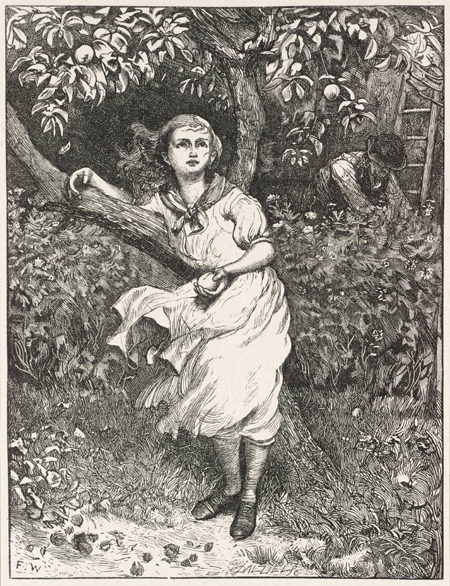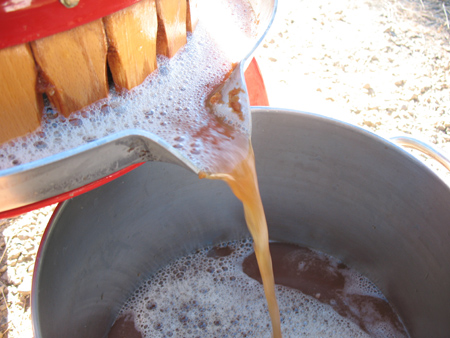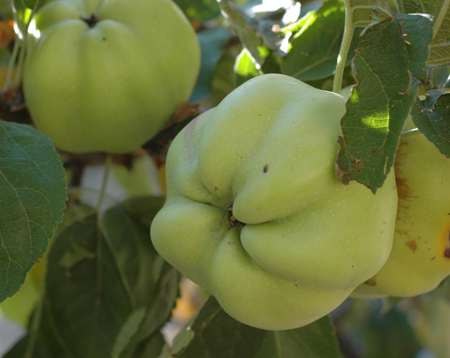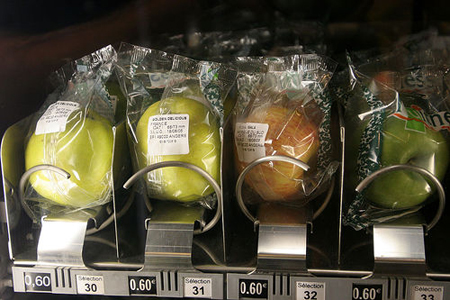 Our society has little of use to offer kids when they are coming of age. Whatever the reasons, our lack of any kind of real transition into adulthood is not consistent with traditional cultures. When I was about 18 and trying to figure myself out I couldn’t see that there was nothing in my human environment that I could use to move toward a life that made any sense to me. I had become increasingly interested in ancestral skills and learning about nature. The things I wanted to learn were very obscure and the life path offered to me by convention extremely distasteful. I had read about Native American youth doing multi-day fasts as part of coming of age trials, the so called vision quest, and decide to go on a four day fast in the woods to help me sort out my path.
Our society has little of use to offer kids when they are coming of age. Whatever the reasons, our lack of any kind of real transition into adulthood is not consistent with traditional cultures. When I was about 18 and trying to figure myself out I couldn’t see that there was nothing in my human environment that I could use to move toward a life that made any sense to me. I had become increasingly interested in ancestral skills and learning about nature. The things I wanted to learn were very obscure and the life path offered to me by convention extremely distasteful. I had read about Native American youth doing multi-day fasts as part of coming of age trials, the so called vision quest, and decide to go on a four day fast in the woods to help me sort out my path.
I had been very much a social discontent from a young age. I was raised to ask questions and I latched onto the rejection stance of punk rock. If there was one message to take home from punk it was that everything was not okay. This was at a time of false optimism in America. Ronald Reagan’s head was bobbling around on television telling us everything was great, except that there was an evil empire called Russia that wanted to wipe us out and we might all be blown to bits at any moment by them, or by ourselves, or more likely both. We walked around thinking any day could be the day the bombs started flying and the world ended. (BTW, For all we know, that's still the case.) I wore inappropriate clothing and slogans, went to protests and was just generally making sure people knew things were not alright damnit! It didn’t take long for me to start realizing that whining was not a very useful tool for social change and that symbols such as clothing, music and language did not take the place of action. In fact, being whiny and contrary turned out to be less fun than one might imagine!
Somewhat earlier when I was even younger, influenced by some of the punk bands I was listening to like Crass, Crucifix and especially the song They (lyrics) by Antisect, and also just because it was logical, I found myself more and more convinced that there was no solution to the worlds ills that made any sense other than changing the way that I actually lived. Switching my view of problems from a primarily external view to a more internal view gave me a chance at some kind of empowerment rather than wallowing in helplessness at the hands of the Ronald Reagans of the world, or whomever. In other words, change the things you can change and get your ducks in a row, which is more than enough to stay busy! This epiphany lead to an interest in self reliance. At about 16 I traveled across the country with some of my family. I remember looking in every book store that I could find in various cities for any books on homesteading and related topics. One store was an anarchist book store. I was not impressed. If anarchy was sitting in a stuffy bookstore wearing black clothes and reading philosophy and politics I’d pass. I came home empty handed. My sister and I also visited the punk scenes of D.C., Boston, Quebec, Atlanta and Austin that summer and while it was fun, they seemed to consist mostly of a bunch of drunkbag wheelchair butts on the fast track to burning out.
So that sets the stage for my vision quest.
I walked up a small redwood sheltered creek in a desolate State Park that I frequented. I had my sleeping bag and some supplies. I hung my pack in a tree, took out my contacts (which meant I couldn’t see shit unless it was right in front of my face, another level of isolation) and with my sleeping bag and a water bottle sat down in a circle of logs and such which I arranged so that I would have definite boundaries. I drank water from the creek as much as I wanted, but otherwise I stayed put and ate nothing. This was not a strenuous exercise like many traditional coming of age ordeals are, but for a relatively privileged kid to make a real effort to go through discomfort for personal growth is worth something anyway. I didn’t know what to expect. I have never been inclined to be religious, so I wasn't expecting something mystical to happen, but I think I figured a profound epiphany of some kind would be convenient.
It is remarkable how being hungry and having no distractions can focus the mind. The key word there is HUNGRY, because what grew in my mind the most in those 4 days was a mini food empire. I thought of every food plant I could, making mental lists over and over so I would remember them. I thought about how and where I would plant them and how many. I visualized a farm or homestead dripping with fruit and nuts, crawling with animals and stocked with preserved foods (There was definitely some thought into where to put the skateboard ramp too). I’m sure I worked out some personal stuff as well, but I don’t recall because it was ultimately food self reliance which was the core of the vision that grew up in me. Dude, self reliance was where it was at! I wasn’t content to be livestock and that's just what I felt like being dependent on an industrial food supply. Nothing could have been more clear. Food bearing trees played a major part in this mental edifice which was, I realize now, the early stirrings of a life long interest.
All around the country there are groups of fruit enthusiasts who get together periodically to trade fruitwood cuttings and rootstocks and such. Some people collect cars, guns, ceramic statues of cute animals... we collect fruit and nut varieties. Although my interest in this area was born largely out of practical goals and a desire to affect my life through action (and still is), I’d be a liar if I said I wasn’t driven also by motives that might be considered less practical. That's okay, we all need some passionate interest to get us through the day. Mine, lately anyway, (ok, one of them) is apples. We have lots of other fruits here at Turkeysong. I’ve planted well over 100 fruit and nut trees, vines and shrubs in 6 years and more are on the way. There are almonds, walnuts, chestnuts, pears, nectarines, peaches, plums, persimmons, cherries (yum), feijoa (A.K.A. pineapple guava pronounced fay jo ah with a soft J), figs loquats, grapes and I’m sure I’m forgetting some... but mostly apples. I have somewhere around 200 unique varieties of apples growing and more being grafted this year. Apples! No dude!, Apples! I want to grab you and shake you until it sinks in A...A....A....A...A...A...A...P...L...L...L...L...L...E...S....S...S...S DUDE!
This has basically been written before. Back when people took their fruit very seriously. Paragraphs and essays extolling the virtues of the apple bespeckle the literature of the last couple centuries and were, I feel sure, well received. Now I’m not a religious man to say the least, but it is apparent there is some comfort in the converted being preached to in order to affirm that yes belief X or god X, or whatever, is indeed righteous or to be feared, and so on. I personally love to read essays on the virtues of the apple and will now try to channel the inspired persons of the past who spoke of apples with the gratitude and reverence due them. Forgive me any errors or inconsistencies. The truth occasionally falls casualty to something more interesting. So without further delay, I present to you some unabashed apple propaganda...
Dear Ladies and Gentlemen, cats, dogs, hogs, cattle and poultry of various descriptions. raccoons, opossums, bears, mice, deer, packrats, voles and birds of many kinds. I have not been asked here today at all, let alone to speak on a subject which others before me have eloquently and thoroughly addressed. Yet I find myself compelled to address our subject nonetheless, for if I plumb the depths of my motives I feel unsure that it is not necessary; that there may not be some persons in the audience who yet remain lost and in need of a light to find the path; that there may not have been something missed which I might point out or remind one of; and more selfishly, I admit that I simply desire to add my humble voice to the throng in order that I shall not have to contain my own malignant enthusiasm.
Apples. What more virtuous fruit of temperate regions? I wager there is none! The apple: possessed of more flavor variations, a longer season, a greater variety of legitimate uses and broader form in shape and color than any other fruit outside of the tropic regions, and possibly including them. It can be cooked in savory and sweet dishes alike, dried for the winter, drained of it’s saccharine juice, fermented to cider, distilled into brandy, soured into vinegar, boiled into syrup, cooked down into apple butter, canned as sauce, and of course eaten out of hand. Other fruits can be treated the same, but not with the versatility of the apple. During our partnership with the Apple, we have developed its possibilities to a greater degree than any other temperate fruit. We could make perry from the luscious pear, squeeze the poor plum of its juices for wine, dry the berry and tuck the cherry into a crust of pie; some may even exceed the apple in a sort of sensational deliciousness, but no other fruit matches the apple for its breadth of suitability for various uses, and it is an imminent suitability at that. Some Apples are tart, some are sweet, some hold their shape when cooked and others fluff into a delicate froth, all to be chosen from for conformation to our tastes and desires.
Nor is the apple so cloying as many fruits. Where the peach the pear the cherry and the grape, can cloy in their rich juicy sweetness, the apple invites eating over a longer season with less tendency to wear out its welcome on the palate. Large quantities can be consumed, especially if met with at the dining table as well as eaten bite by bite fresh from the hand. The apple is wholesome food.
Contributing yet more to the welcome which the apple finds with humanity is its breadth of variation in flavor. Hidden in the genes of Apples are a broader range of flavors than in any other temperate fruit. Flavors of banana, mango, fennel, almond, strawberry, raspberry, nuts, pineapple, citrus, cherry, rose, vanilla, spices, herbs, pear, wine, “apple”, melon and more can all be found in apples accented with more or less of acidity and sugar. These flavors, sugars and acids wait to be further mixed together, by breeding and by chance, into infinite combinations to both suit and broaden our tastes. From the easy edibility of the understated yet harmonious flavor of the Golden Delicious, to the epiphany of the balanced rubinette, to the sensational cherry bubblegum of Sweet 16, to the compelling symphony of flavor in a perfect Golden Russet or the fruit punch flavor of Grenadine, we have them not only in one species of fruit, but with grafting we can have them from just one tree! Can any other fruit boast this palate of flavors? I think not.
And all of this over a longer season than any other temperate fruit. Beginning as early as June in some regions, apples can be plucked ready to eat from the tree from early summer through late winter and probably further on. While the fine flavored Kerry Pippin is a fond memory of August heat, the Granny smith still clings steadfastly to the tree in mid winter accumulating sugar and flavor. Granny’s fair daughter Lady Williams clings yet longer to the branch being unsuitable for eating until the end of January. These fruits and more like them show clearly the possibilities inherent in the apple for an increasingly extended season of fruit straight from the tree. Add to this already long season the outstanding keeping ability of many of our winter apples and we can, with a little planning and good storage, have quality apples for most, if not all, of the year. Many of our apples can keep through the winter safe in their protective skins. Some will keep into spring and even until the following harvest. The breeder is hard at work developing ever later keeping apples which will come out of long storage in the finest condition and who knows what the limit may be.
In our apples we also have an unprecedented range of form and color. Solid colors in red, yellow and green. variously striped with pinks, oranges and reds, washed with flushes and blushes, possessed of sublime translucency or impenetrable opacity, unblemished skins smooth and shining, hanging in un-presuming matte or covered in dusty bloom, overspread with russet and speckled with dots large or small. The King David demands attention in its redness, the Yarlington mill invites examination with it’s watercolor layers of translucency and cracked map of russet, while the intense red flesh of the Grenadine shines pink through a thin skin covered in speckles. Artists have time and again been moved to capture the beauty of the apple, It’s bending and refracting of light, its depth and its colors. Just google apple painting if you doubt me.
In these varied colors we have apples which can weigh a pound or more, apples the size of large grapes, and everything in between. They droop from the twig variously in the shapes of cones, pears, ovals as if pulled by gravity, ovals as if to defy gravity, flattened like a doughnut, or merely round. They are symmetrical or lopsided, ribbed, or blocky. Long stems or short stems, clinging to branches or hanging at the ends of drooping twigs. The trees are willowy or stubby and short jointed, a few feet tall to tens of feet tall. The smallest ones give us dwarfing rootstocks on which to grow miniature trees. The bark varies nearly as much as the fruit in color and form as does the outline and growing habits of the tree, from a single spire 2 feet in diameter to spreading branches which may even grow downward, instead of horizontal, let alone upward. They provide us with pleasant shade and deep intriguing orchards that have lured and moved poets, lovers, scientists and children.
Yes, the Apple. It represents wholesomeness and good things in American culture, a symbolism which is not arbitrary, but which has grown naturally out of it’s virtues. One could go on cataloging the Apple’s traits and virtues but that could only suggest the possibility of the poetry of the apple, a poetry that we can feel, but which our attempts to express must be mostly inadequate. We may be better satisfied to hint at the romance of apples rather than to attempt outright description. Flowery and detailed renditions will likely fail to impress and we had better stick to tracing the subtle, sublime edges-- delicately suggesting the outline of a feeling and leaving the imagination to fill in the rest or to just wonder. Still, spreading trees hanging with fruit or dressed in spring blossoms, dappled light, tantalizing memories of juicy crunching flesh, washes of vibrant flavor, juice flowing from presses and scents of all kinds stir the feelings and can move one to communicate with our limited symbols so that others might see the beauty and value we have witnessed.
 The Apple, guided by man’s hand for millennia into ever more varied form and function is at once servant and king, a humble savant, dripping with abundant beauty, inspiration, pleasure and utility in return for so little! We chop it’s branches and it grows the more. We throw filth and waste on its roots and it bears forth a miracle of abundance; each dropping fruit bursting with sugar and juice, a miracle in its own beautiful and practical package.
The Apple, guided by man’s hand for millennia into ever more varied form and function is at once servant and king, a humble savant, dripping with abundant beauty, inspiration, pleasure and utility in return for so little! We chop it’s branches and it grows the more. We throw filth and waste on its roots and it bears forth a miracle of abundance; each dropping fruit bursting with sugar and juice, a miracle in its own beautiful and practical package.
Apples survive in their variety only with our thoughts and our actions. We either live a culture of meaningful food, or lose it. Thousands upon thousands of varieties of apples are already lost forever and we lose more every week to the bulldozer, to neglect, to age, or with the passing away of the only person who remembered the name of that old tree by the woodshed, or even cared. But the bulldozer, the physical neglect, and the fact that we die are not the real enemies of the apple , it is more that we have stopped cohabiting with the apple. What was once like a spouse, a lover, a child, a sibling, a grandparent, a friend, with which we lived intimately and relied upon, is now reduced to a commodity. The apple will not thrive without our love and respect, but will instead be reduced to prostitution, it's production banned to the industrial farm, painted in bright colors and put on the shelves where we can buy her in an attempt to find the love we’ve lost.
The apple has fed us and made our lives better for eons, and it is a tragedy that we have all met with so many poor specimens, and even more so that poor apples have simply become the norm. If apples do not improve, we are at risk of losing our faith in them, as some already have. But the truth is that when properly selected, grown and handled, the apple is awesome. If you think you don’t like apples so much, I don’t blame you given what is usually available for sale, but maybe you haven’t met the right one at the right time.
An apple renaissance is afoot and promises to make available to us more and much better apples. Don’t wait for them to come to you. Seek out new and interesting apples. Engage in the simple act of talking about them with friends and strangers. Support the farmer taking a chance on growing small lumpy apples that taste amazing. If the apples at the store are no good, don’t buy them, but demand better. Best of all, Improve your life, improve the lives of others, take care of those who come after you, plant an apple tree.














